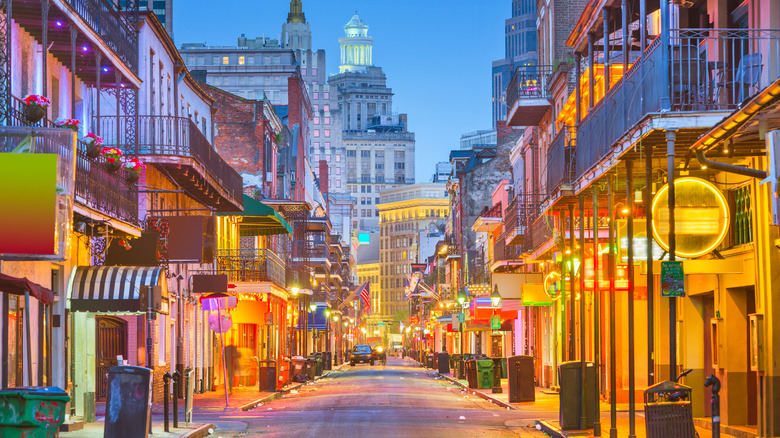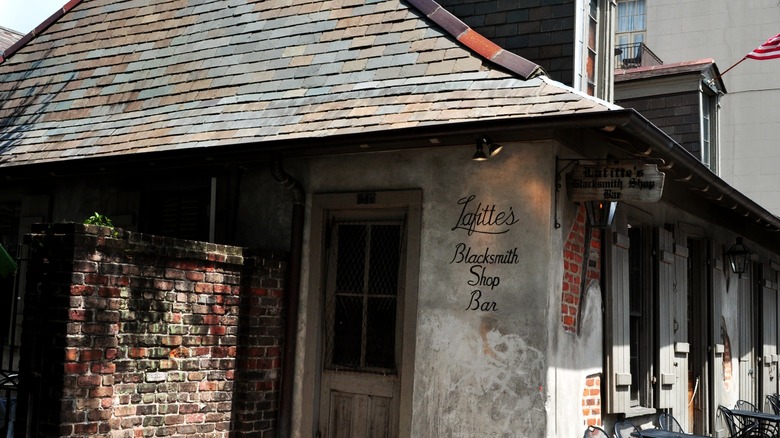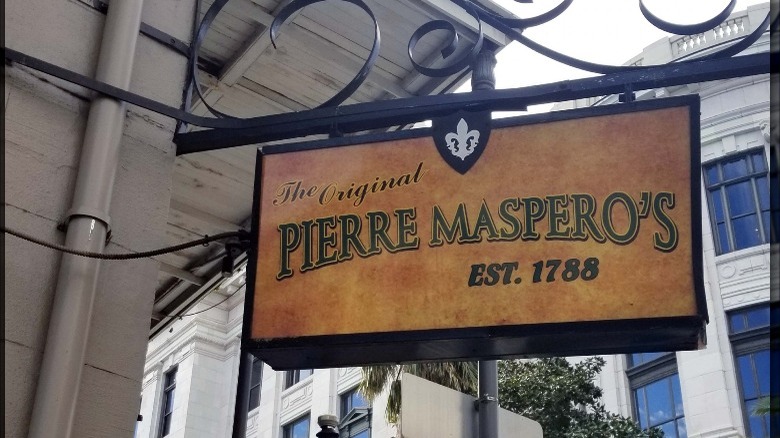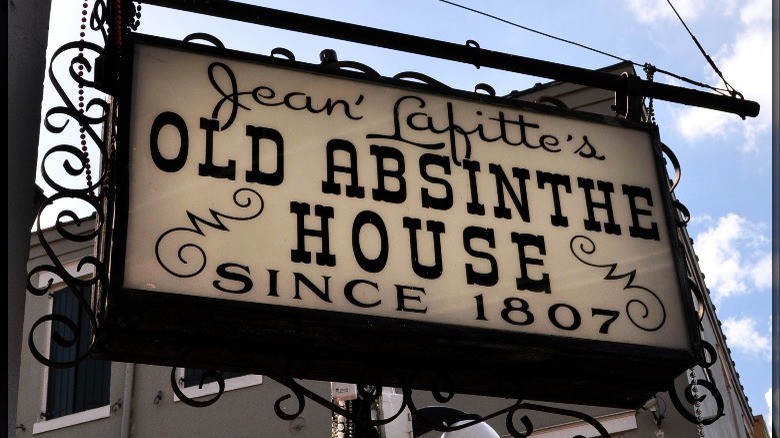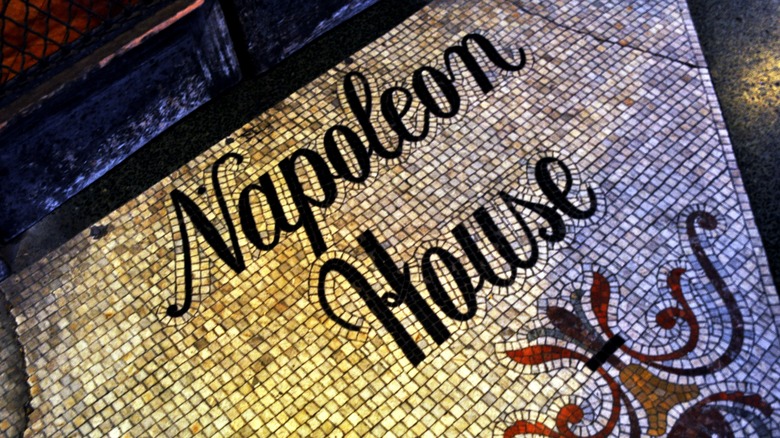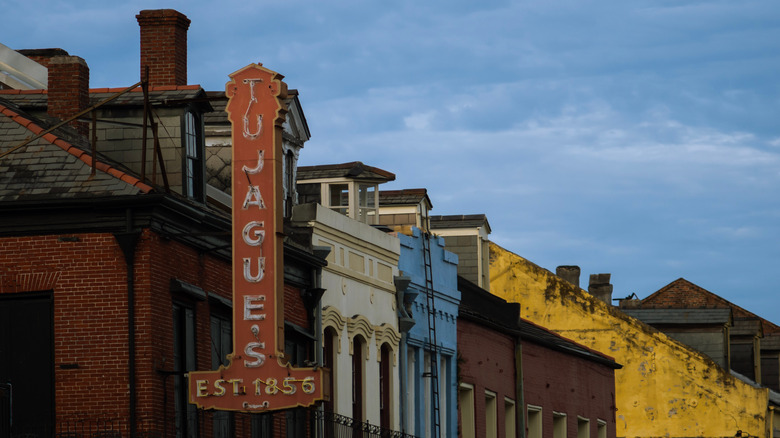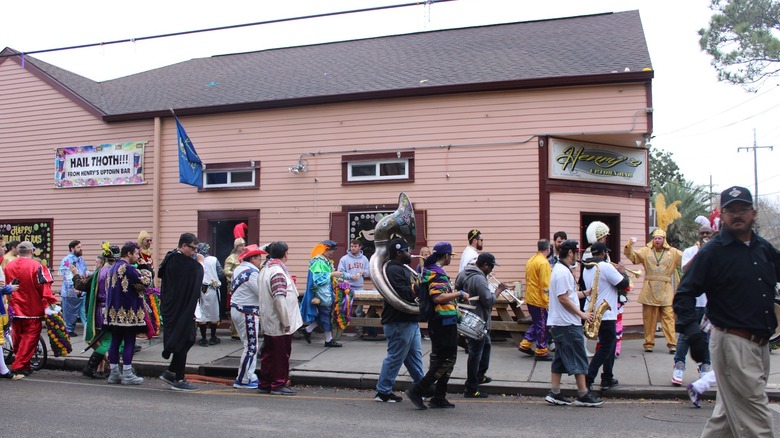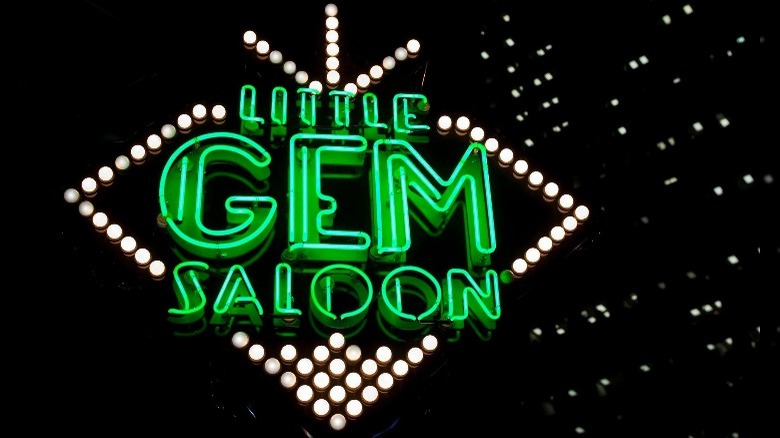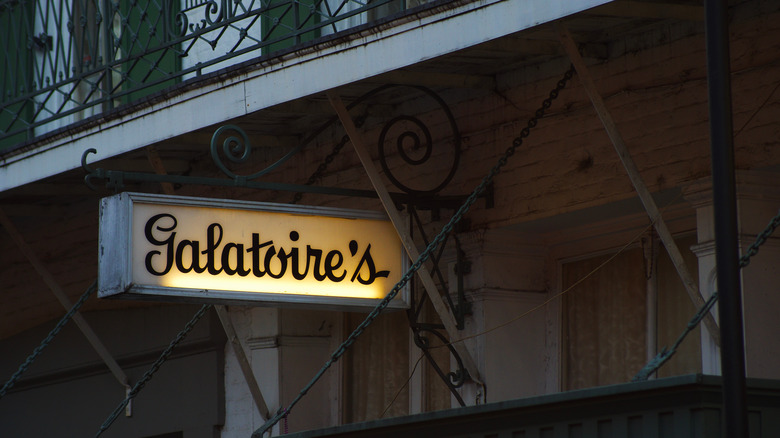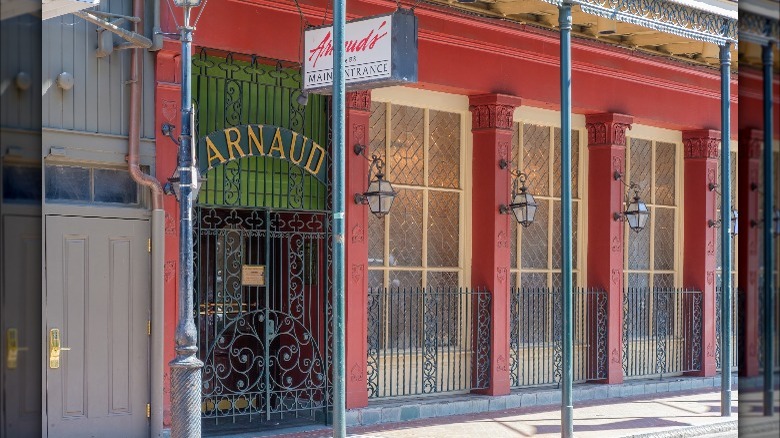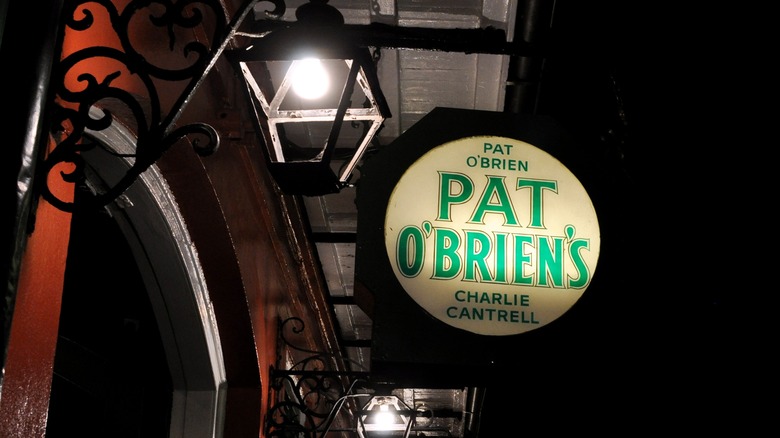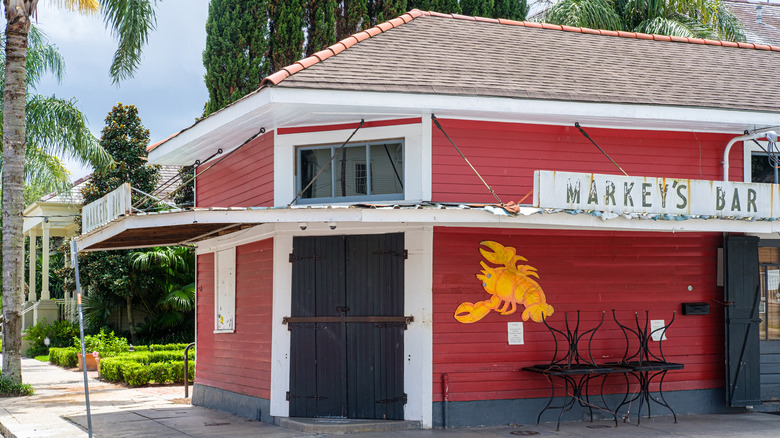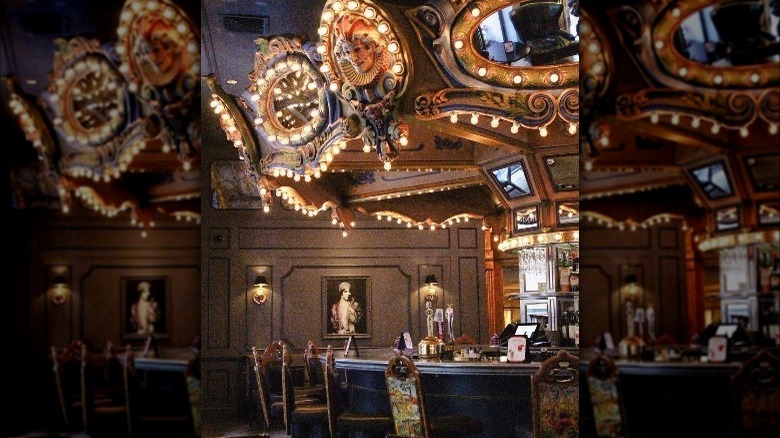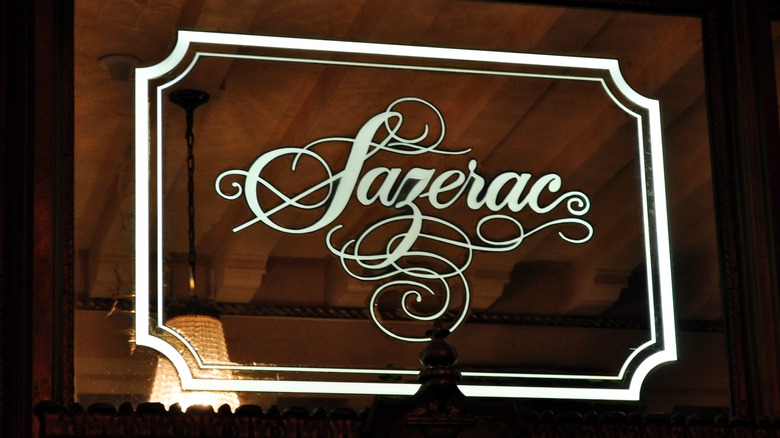12 Oldest Bars In New Orleans
New Orleans: The place of Mardi Gras, the Saints, jazz, jambalaya, and plenty of cocktails. This is the place where the sazerac, hurricane, vieux carre, and Ramos gin fizz were created. These are the classic cocktails that are not only still being enjoyed today, the bars where they created are still standing. Take a walk up and down Bourbon Street (and beyond) to find several bars of all shapes, sizes, and ages. While most have been created in the past few decades, there are a select few that are as old as the town itself.
Each one of these bars has something special about it. One was supposedly founded by a pirate. Another was supposed to be a safe haven for Napoleon Bonaparte. Some bars have cement floors, a couple are hidden inside hotels, and there's even one that spins! Each New Orleans bar has a claim to history and each story is as interesting as the next. So, join us as we describe each of the 12 bars that you'll only find in New Orleans and why you must visit each of them the next time you find yourself in the Big Easy.
Lafitte's Blacksmith Shop Bar
The oldest bar in New Orleans — built between 1722 and 1732 — has swashbuckling origins. Lafitte's Blacksmith Shop Bar is in the old brick building where famed pirate, turned New Orleans hero, Jean Lafitte and his brother Pierre set up shop. After Lafitte helped defeat the British in the Battle of New Orleans, he is said to have been the man to see if you were in need of food, drink, and the occasional weapon. Originally set up as a base for a variety of Lafitte's negotiations, the "shop" didn't actually become a bar until the 20th century, according to the Preservation Resource Center of New Orleans.
Located at the end of Bourbon St, the nondescript cement building doesn't really fit in with what's now considered the New Orleans style — no iron balconies or ornate moldings. This little shop has cement floors, a beautiful old brick fireplace to keep warm all those years ago, a few old tables, a bar, and no electricity! After the sun goes down, the shop is lit with candles to complete the vintage experience.
Like several bars in NOLA, Lafitte's has a signature cocktail: the Voodoo Daiquiri. Known locally as the Purple Drank, it's a dark purple, grape-flavored slushy that full of bourbon and Everclear, which means it packs a punch. Served in a plastic cup, this cocktail can be enjoyed on the premises or taken to go.
Pierre Maspero's
On the corner of St. Louis and Chartres in the historic French Quarter sits the Original Pierre Maspero's. According to the Historical Marker Database, the location opened in 1788 as Pierre Maspero's Slave Exchange, a site to purchase enslaved people. After a fire destroyed the building in 1794, the building was rebuilt sometime between 1795 and 1810 as a coffee house where planters and merchants would meet for a cup of coffee and enter into various business deals, according to New Orleans Historical.
As the years progressed, the locale was a popular spot for regulars and dignitaries alike: There's a historical plaque on the structure that claims Andrew Jackson met with the Lafitte brothers to plan the defense for the Battle of New Orleans. Today, Pierre's is a place where locals and tourists alike can come and enjoy a meal and a drink. The space also serves a bit of NOLA history (or lore, depending on who you ask).
Old Absinthe House
Just like Pierre Maspero's, Jean Lafitte's Old Absinthe House lays claim to the infamous meeting between Andrew Jackson and the Lafitte Brothers. The house is so insistent that in 1950 the owners also installed a plaque stating the legend. There is one thing the Old Absinthe House can absolutely claim without any competition: the Absinthe Frappe. A simple mixture of absinthe and sugar water, the classic cocktail was known locally as the Green Monster and is said to be created at this bar in 1874.
Built in 1806, the bar was originally a store that imported and sold goods like tobacco, food, and Spanish liquor. It was turned into a saloon simply known as Aleix's Coffee House in 1815 and then rechristened the Absinthe Room when mixologist Cayetano Ferrer created the Frappe. Forced to close during Prohibition, the bar continued serving liquor under the table until everything, even the bar, was moved down the street to a speakeasy. But, on December 5, 1933, Prohibition was repealed and the Old Absinthe House moved back to its original location.
Today this is the place to go for the classic Frappe. But, they also have several other cocktails devoted to absinthe. So, if you dare take a visit from the green fairy, sidle up to the bar and order something green.
Napoleon House
Like a few other bars on this list, Napoleon House is yet another bar that has a relationship with a famous warrior. This time it's Napoleon Bonaparte. He's actually how the bar got its name. The story goes that owner Nicholas Girod, who was the mayor of New Orleans from 1812 to 1815, offered up his residence to Napoleon in 1821 as a place of refuge during the dictator's exile from France. Napoleon never made it, but somehow the name stuck.
Over the decades, the residence became a store. When Joseph Impastato purchased the building in 1914, he opened up a tavern next door that served alcohol all through Prohibition. To add some ambiance, Impastato moved his victrola in and started playing opera and classical music, a trend that continues today. While the deed has changed hands over the years, Napoleon House continues to be the bar to visit for a classic Pimm's Cup, a nice cup of gumbo, and some lovely classical music. You might even hear Beethoven's Eroica, which is said to have been inspired by Napoleon himself.
Tujague's Restaurant
If there's one thing New Orleans is known for, other than food and drink, it's hauntings. Several locales all throughout the French Quarter are known for having happy (and not so happy) haunts in residence and Tujague's restaurant is no different. While sightings are few and far between, Tujague's claims numerous stories of broken china, slamming doors, and unexplained shadows. But, those spirits aren't the only thing you can find behind the doors at this bar, which was established in 1856. There's also an abundant amount of cocktails, including the classic Grasshopper created by Philip Guichet in 1918.
Unfortunately, what you won't find at Tujaque's anymore is the original standup bar or 300 year-old mirror that hung behind it, as the bar was forced to relocate in 2019 when the lease was up. While the distance between the two locations is small (just a few blocks) the effect of the move is mammoth. A lot of the vintage pieces that made Tujague's the destination it was were left behind. The beautiful wooden standup bar was too fragile to make the move and the mirror ... it still hangs at 823 Decatur. The owners did bring over the bar's foot rail, light fixtures, and the large portrait of Otis Guichet though, so at least there are still a few reminders of the classic bar. And, of course, you can still enjoy a Grasshopper while you indulge in a decadent brunch.
Henry's Uptown Bar
At 122 years-old, Henry's Uptown Bar is the place to go in New Orleans if you're a Saints fan — or just want a beer. This bar sits on the corner of Soniat and Magazine. From the outside, it's a simple building with salmon siding and a few outdoor tables. But, once you walk through the door, it's the place where everybody knows your name. Locals congregate here after work or class, and according to radio station WWNO, even Lee Harvey Oswald used to enjoy the occasional beer at the bar when he lived in the neighborhood.
The walls are covered with vintage photos and old newspaper clippings, big screens hang from every corner so you can watch the favorite team (The Saints, of course), and they have a nice variety of beer on tap. While you can absolutely order your favorite cocktail, Henry's is really the place to go when you're in the mood for a burger and a brew.
Little Gem Saloon
Originally opened in 1903, the Little Gem Saloon was the place to go for good cocktails and great jazz. Considered the birthplace of jazz, according to WWOZ, this little saloon showcased some of the greatest jazz musicians of the early 20th century. The article explains that performers like Jelly Roll Morton and Buddy Bolden performed to crowds, who grooved and drank late into the night, just a few short blocks away from New Orleans' red light district. During the next few decades the saloon changed hands several times but was always the place where musicians could enjoy a drink and jam into the wee hours.
All that changed in the '60s, WWOZ says, when several buildings in the once thriving jazz district were demolished to make room for a new city hall. While Little Gem was left standing when so many other buildings were destroyed, the doors and windows were boarded up, leaving the classic jazz haven vacant for almost 40 years. Luckily, in 2012, Little Gem got a new lease on life when the Bazan family restored the saloon into a restaurant and music venue. Today, the public can still go hear good music and enjoy a great cocktail.
Galatoire's
In a city that's as popular for its food and drink as it is for its jazz and art, sits Galatoire's restaurant, which has been feeding locals and tourists French cuisine and cocktails for over a century. Founded in 1905 by Frenchman Jean Galatoire, the restaurant prides itself on familial dining and French cuisine. With options like oysters en brochette and crab ravigote, specialties that have been around since Galatoire's opening, it's easy to understand why the line starts early to get into this French Quarter staple. That line isn't just about getting a table, it's also about making sure you get your regular waiter. According to NPR, some families have been waited on by the same person for generations.
Classic French delicacies aren't the only thing you'll find at Galatoire's, though. The restaurant also offers all the classic cocktails that New Orleans is known for. Sure, you can enjoy mimosas over lunch, but a Pimm's cup, milk punch, or hurricane cocktail are better suited to this classy affair. But, whatever you choose, get there early and come dressed in your best because you definitely do not want to miss out on this fancy eatery.
Arnaud's
Another French bistro is Arnaud's restaurant, opened in 1918 by Arnaud Cazenave. The restaurant was dedicated to serving Creole cuisine to anyone who visited the French Quarter. While the menu has always been top notch, boasting plenty of oyster appetizers and more seafood entrees than one can count, the cocktail options weren't as dialed. Since the eatery was opened only a year before Prohibition, Count Arnaud was forced to do what most did during this time and hide his alcohol. See, he believed that a good meal should include wine and cocktails. So, all through the '20s, drinks are said to have flowed through Arnaud's private rooms, back bars, and plenty of coffee cups.
One of those back bars can still be accessed for a cocktail today, thanks to Archie Casbarian, the newest owner of Arnaud's. Officially opened in 1948, one year before the Count died, the Richelieu Bar has something most bars don't: a private entrance off the street. It also has the Stoopie Bench. Located right inside the door, the "bench" was for those patrons who'd had a bit too much to drink and needed a little shuteye before venturing back outside. With drinks like a French 75, Creole Fashioned, and Flor de Lindo on the Richelieu bar menu, it's understandable why Casbarian made a point of bringing both the bar and the bench back to all the heyday glory.
Pat O'Brien's
If you've ever had a hurricane cocktail, you have Pat O'Brien's to thank for it. Located in the heart of the French Quarter, this bar, known for the plentiful amount hurricane glasses and dueling pianos, is where the classic tropical libation was born. While the bar officially open on December 3, 1933 (yes, just two days before Prohibition was repealed), it didn't move to its current location until 1942 when Pat O'Brien and dear friend, Charlie Cantrell, bought the 18th century building.
This drink came about simply because domestic liquor was scarce due to local distilleries being used to create war necessities during WWII. Rum, however, was readily available thanks to the Caribbean islands being so close to Louisiana. Then general manager, George Oechsner, Jr., and his bartenders started experimenting with various flavors and decided that when passionfruit was combined with light and dark rums, you got a tasty drink indeed. They served them up in glasses shaped like hurricane lamps and the cocktail was born. They still serve the drink at O'Brien's today, but unlike when it was created in the '40s, today's concoction is made with a pre-made mix. So, while O'Brien's is definitely worth a visit, head to another bar on this list if you want to sample the classic.
Markey's Bar
The Markey's Bar building, located at 64 Louisa Street, has always had liquor in one form or another. Starting as Standard Brewing Company in 1905, the brewery kept up production until the early '20s (presumably when Prohibition began). Then, it became Frish's Cafe, and in 1947, Joe Markey turned it into the bar it is today.
Full of flatscreen TV's (13 to be exact) on which to watch your favorite sporting event, this is the place to go when New Orleans is playing and you're looking to enjoy a burger and a beer. That's not to say that they don't serve the hard stuff — they do! But, with 27 beers on tap, including plenty of Louisiana and national craft brews, you definitely want to grab a pint.
New Orleans always had a large Irish population, and while there's been a parade for Mardi Gras for decades, there was never one for St. Patrick's Day. Plenty of the Irish locals didn't understand why. So, according to the Downtown Irish Club, Markey and a few friends started a St. Patrick's Day parade in 1977. What does this have to do with Markey's Bar? It's the starting point, of course.
The Carousel Bar
Is the bar spinning or have you over indulged while visiting the Big Easy? If you're sitting at the rotating bar inside New Orleans' Hotel Monteleon, it's the bar, not just you ... probably. The Carousel Bar really is spinning. The 25-seat bar, which opened in 1949, is actually attached to a working merry-go-round. The bar makes a full rotation under the brightly colored lights and carvings every 15 minutes. So, if you enjoy a leisurely drink with a friend or lover, odds are you'll make the trip more than once. If you're worried that the only way to visit the Carousel is by booking a room at the hotel, don't be. You don't need to be a guest to enjoy a drink here.
Serving New Orleans classics like the sazerac and vieux carre, this is the place where famous writers Ernest Hemingway, F. Scott Fitzgerald, and Tennessee Williams have enjoyed a drink while coming up with their next great novel. A few of these literary giants have even included the famed watering hole in their stories. But, these famed writers aren't the only ones impressed with the rotating bar. We agree that The Carousel Bar & Lounge is one of the more notable bars around the world.
Sazerac Bar
One vintage bar located inside a hotel is the Sazerac Bar. Named after the famed cocktail, this bar is lit with crystal chandeliers and murals that cover the walls from 1930s artist Paul Ninas. The lounge opened its doors inside the Roosevelt Hotel in 1949 and was supposedly the headquarters for New Orleans governor, Huey Long.
Long loved the bar so much in fact, that according to Atlas Obscura, he lived on the 12th floor of the hotel and could often be found at the bar sipping on a Ramos gin fizz while holding court with his constituents. There's even a bullet hole preserved in the wall said to be from when one of Long's bodyguards, who got a little over eager with his trigger finger. Luckily, no one was injured.
That accidental gunshot isn't the only strange event to occur within these walls. According to Nola.com, when the bar opened on that fateful day in September, the hotel's general manager let it be known that women would be allowed inside. This was unprecedented since women had only been allowed inside the space during Mardi Gras, according the Nola.com, and the women supposedly showed up in droves at the Sazerac. The Storming of the Sazerac continues to this day with women showing up in vintage costume every September 29 just to enjoy a drink and remember the groundbreaking day.
